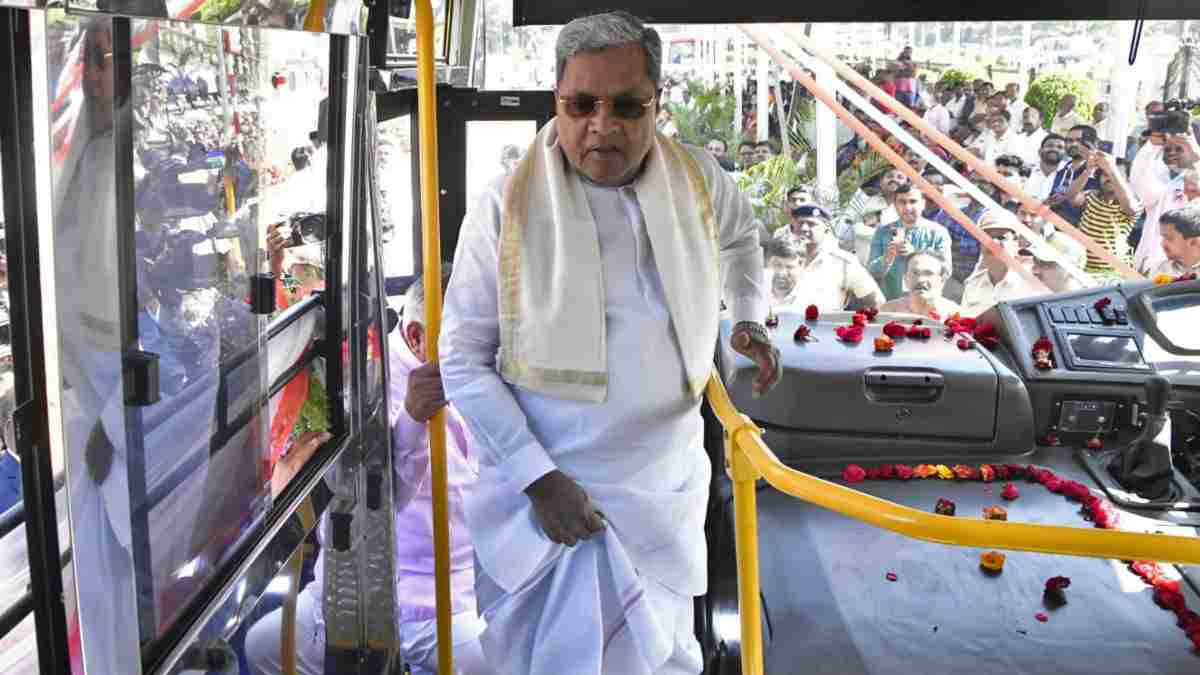Karnataka Bus Fare Hike is set to take effect from January 5, 2025, with a 15% increase announced by the state government for buses operated by the four Road Transport Corporations (RTCs). This decision is aimed at addressing the financial challenges faced by RTCs while also balancing the impact of initiatives such as the Shakti scheme, which provides free bus rides to women in Karnataka. The fare hike is expected to generate an additional ₹74.85 crore in monthly revenue for the RTCs.
Details Of The Bus Fare Hike
The 15% fare increase will apply to all RTC-operated buses across Karnataka. This includes services provided by the Karnataka State Road Transport Corporation (KSRTC), Bengaluru Metropolitan Transport Corporation (BMTC), North Western Karnataka Road Transport Corporation (NWKRTC), and Kalyana Karnataka Road Transport Corporation (KKRTC).
According to Minister H.K. Patil, the fare hike was deemed necessary to offset the financial burden of providing free bus services to women under the Shakti scheme and to ensure the sustainability of public transport operations. “The hike will enable us to manage operational costs and maintain service quality across the state,” he said during a press briefing.
Why The Hike Was Necessary?
Public transport in Karnataka has faced significant financial challenges in recent years. With rising operational costs, including fuel prices, maintenance, and salaries, the RTCs have been grappling with budget deficits. The introduction of the Shakti scheme, which offers free travel to women, further added to the financial strain on the RTCs.
Key reasons behind the fare hike include:
- Offsetting Operational Costs: Fuel prices and vehicle maintenance expenses have risen sharply in recent years, necessitating additional revenue to keep services running smoothly.
- Balancing Free Schemes: The Shakti scheme, while widely appreciated for promoting gender equality and empowering women, has placed a considerable financial burden on the RTCs.
- Sustaining Quality Services: The fare increase is intended to ensure that the RTCs can maintain the frequency, safety, and quality of their bus services.
Impact On Commuters
The fare hike will directly affect millions of daily commuters who rely on RTC buses for affordable transportation. While the increase might be a financial strain for some, the government has assured the public that the decision was made to safeguard the long-term viability of the transport system.
Commuters have expressed mixed reactions to the announcement. For regular passengers, particularly those from low-income groups, the fare hike may add to their monthly expenses. However, many acknowledge the importance of maintaining reliable public transport and supporting government initiatives like the Shakti scheme.

Government’s Perspective On The Decision
The Karnataka government has defended the fare hike as a necessary step to ensure the financial health of the RTCs. Minister H.K. Patil emphasized that the decision was not made lightly but was essential to address the dual challenges of rising operational costs and the financial implications of free travel schemes.
“The RTCs play a vital role in ensuring affordable and accessible transport for millions of people across Karnataka. This fare hike is a step towards stabilizing their operations while continuing to support initiatives like the Shakti scheme,” the minister stated.
Public Transport In Karnataka: A Historical Perspective
Karnataka’s public transport system has long been a cornerstone of the state’s infrastructure. The KSRTC, established in 1961, has grown to become one of the largest state-run transport corporations in India. Over the years, RTCs have introduced various initiatives to improve connectivity, reduce travel time, and enhance passenger comfort.
Despite these efforts, the sector has faced challenges such as fluctuating fuel prices, increasing competition from private operators, and the financial strain of government-mandated schemes. The fare hike in 2025 is not the first of its kind; similar measures were taken in the past to ensure the sustainability of public transport services.
Balancing Public Welfare And Financial Sustainability
The Karnataka government has been walking a tightrope in balancing public welfare initiatives with financial sustainability. The Shakti scheme, which provides free travel to women, has been widely lauded for promoting gender equality and increasing women’s mobility. However, its implementation has significantly impacted the revenue streams of the RTCs.
By increasing bus fares for paying passengers, the government aims to distribute the financial burden more equitably. While this approach may not be ideal for all commuters, it reflects the complexities of managing public services in a resource-constrained environment.
What Lies Ahead For Karnataka’s Public Transport?
As the fare hike takes effect, the Karnataka government is expected to closely monitor its impact on commuters and the financial health of RTCs. Key priorities for the future include:
- Improving Efficiency: The RTCs must focus on optimizing operations, reducing costs, and enhancing service quality to justify the fare hike.
- Expanding Coverage: Increasing connectivity to underserved areas can help attract more passengers and boost revenue.
- Promoting Sustainable Transport: The government should continue investing in eco-friendly alternatives, such as electric buses, to reduce environmental impact and operational costs.
A Step Towards Financial Stability
The 15% bus fare hike in Karnataka highlights the challenges of balancing public welfare with economic sustainability. While the decision has sparked debates among commuters, it underscores the importance of maintaining a robust and reliable public transport system. As Karnataka continues to innovate and adapt, its public transport sector remains a vital lifeline for millions of residents.



